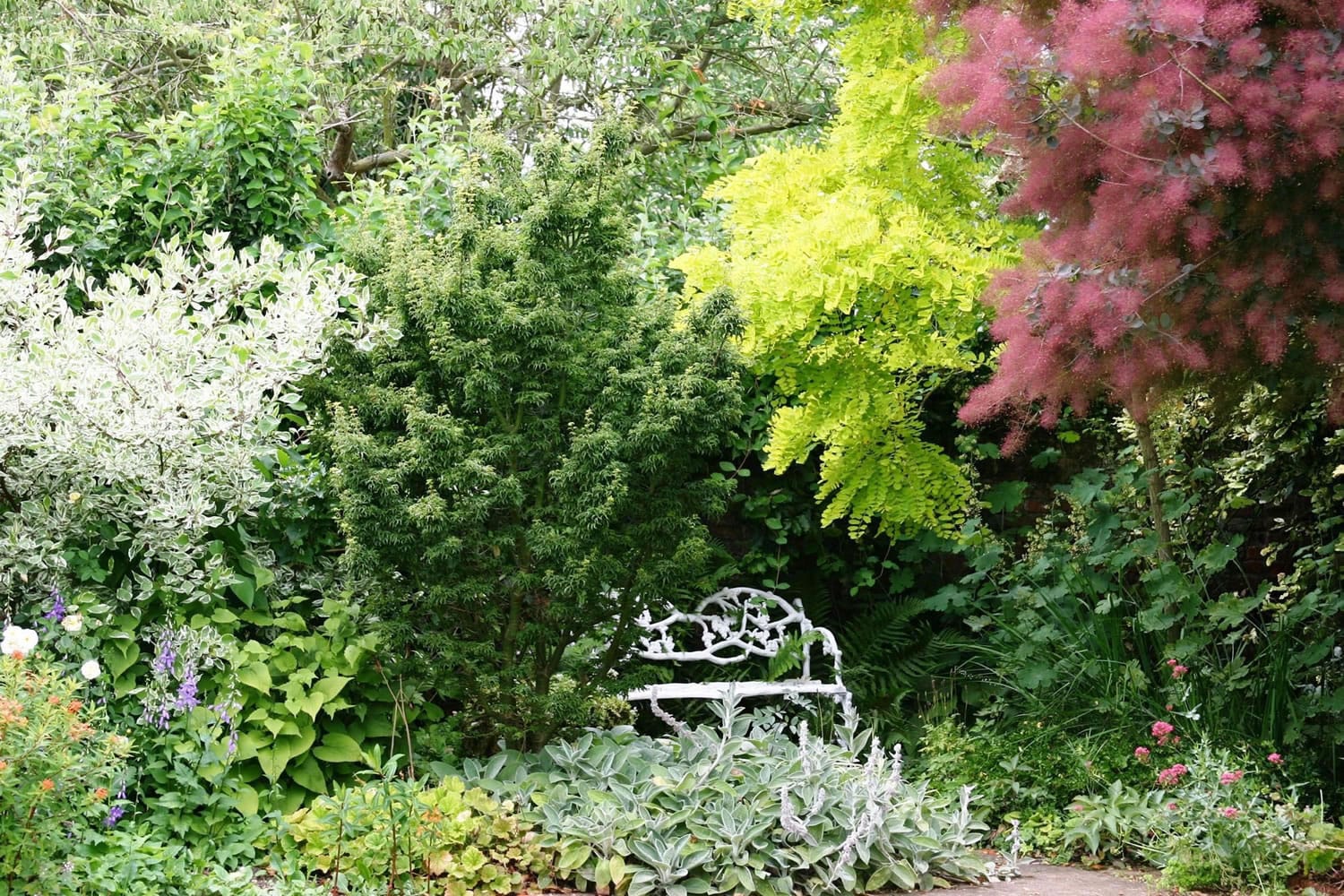I think of autumn as the grand finale to a long, ever-changing performance in the Northwest garden.
For the gardener, especially those of us with a bent for collecting, this prelude to winter can be an embarrassment of riches. The vast selection of trees and shrubs available to us is one of our biggest challenges. When you covet every new plant you see, it’s easy to overload your garden through sheer abundance.
Part of the gardening experience is planting our gardens to reflect the distinct seasons of the year. In anticipation of the changing autumn garden, we concentrate on adding late-flowering perennials, intriguing evergreen conifers and deciduous trees, as well as shrubs that are known for their striking autumn foliage. At this time of year, the focus is on vibrant fall leaf color, plant silhouette and berry production.
A planting area with all-year interest will contain a mix of trees, shrubs, vines and perennials. At this time of year, we can count on autumn rain to water new plantings, while the warm soil and cool air insure ideal conditions for planting and transplanting. As long as you are prepared to protect young plants from unexpected freezes, you can plant out needle and broadleaf evergreens in the fall.
Conifers draw our attention even when they stand alone in the garden. Although they may blend into the background when surrounded by a mass of flowering perennials, in winter they step forward to give the garden form and structure. Abies Koreana “Silberlocke” is a striking, conical evergreen Korean fir. Its blue foliage is highlighted by a glinting streak of silver on the underside of each needle.
In addition to the relentless introduction of new plant varieties, a few plant growers have introduced new selections of plants that were once shunned in the Northwest garden, specifically, junipers. When I began my garden here at Scout’s Run, the first thing I did was remove 50 feet of overgrown, skin prickling, no-name junipers.
In the last few years, I have planted a few of the latest introductions and have found them great additions to the all-season garden. Grey Owl Juniper is a finely textured evergreen with silver-gray needles on arching branches. It forms a uniform, 3-foot tall, drought-tolerant ground cover.
Juniperus chinensis “Gold Lace” is a compact Pfitzer juniper with dazzling, golden-tipped foliage. Juniper “Good Vibrations” changes color through the seasons, beginning chartreuse in spring, turning bright yellow in summer and taking on orange hues in autumn. This juniper is even soft to the touch.
A fall shrub list in the Northwest garden has to include a selection of spireas. These plants come in an array of sizes with spring and autumn leaf color from lemon yellow to pale pink. One of the newest spirea introductions is the Double Play series from Spring Meadow Nursery. The term “double play” refers to the shrub’s color interest beyond flowers, which means the foliage is especially vibrant in spring and fall.
Spirea “Double Play Gold” is a compact, low-mounded deciduous shrub with vibrant golden foliage and masses of pure pink flowers. “Double Play Big Bang” sports massive clusters of pink flowers atop bright yellow foliage. The blue-green foliage of Spirea “Double Play Artist” emerges in the spring with hints of rich purple-red.
Often the plants we choose in fall make the difference in how we feel about our winter gardens. Don’t think of winter as a time of bare spots and see-through borders. Instead, focus on large-scale plantings of trees and shrubs, both deciduous and evergreen. Create spaces that feature attractive specimen plants that take center stage when the prima donnas of summer fade away with the season.
The avid gardener, rarely satisfied with the obvious, will want to include trees with special interest. The Birch Bark Cherry (Prunus serrula), is of great value to the winter garden with its glossy mahogany red bark. Include the Paperbark Maple (Acer griseum) in your garden for its cinnamon-colored bark that peels away into thin, curling sheets. Backlit by the setting sun, you will marvel at this tree’s subtle beauty.
I can’t help feeling that there is always more left out of a Northwest garden plant list than what is included. If you happen to be one of the blessed few with enough space, time and help to put every plant you crave into the garden, limiting your plant palette is not necessary. For the rest of us, making sound plant choices that enhance the size, scale and style of our living spaces may be the key to a satisfying garden.
Robb Rosser is a WSU-certified master gardener. Reach him at Write2Robb@aol.com.



